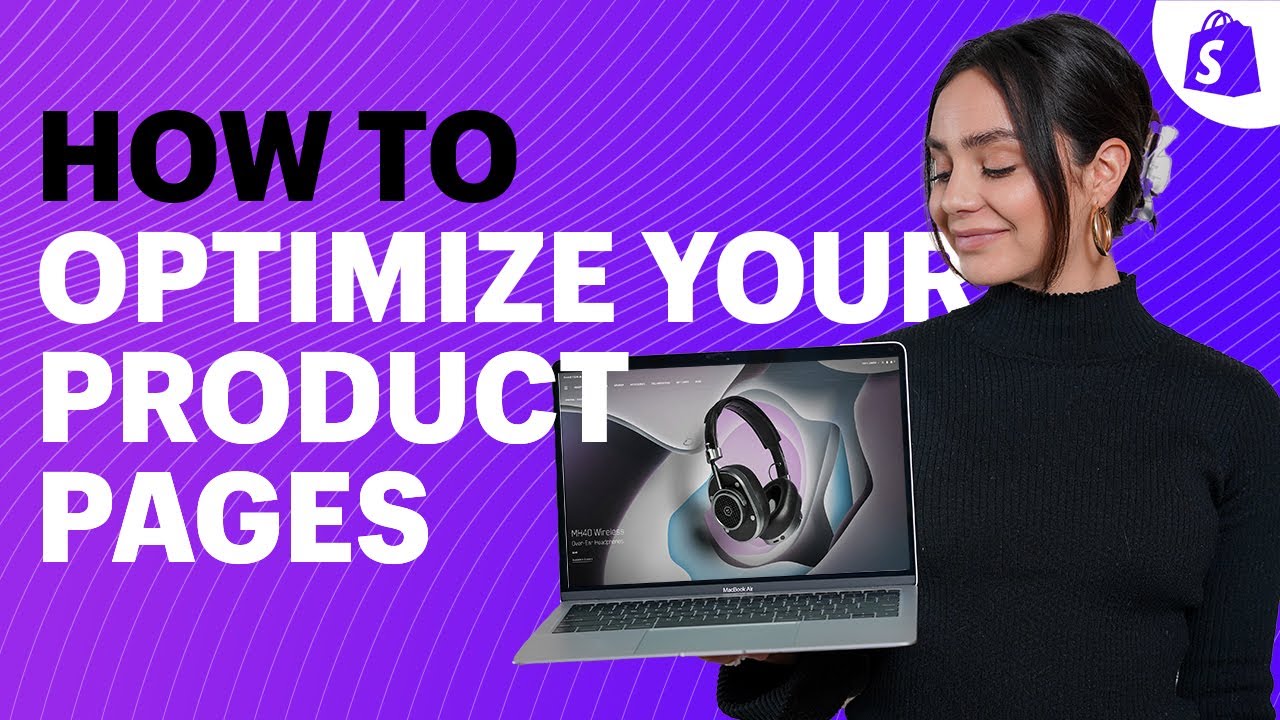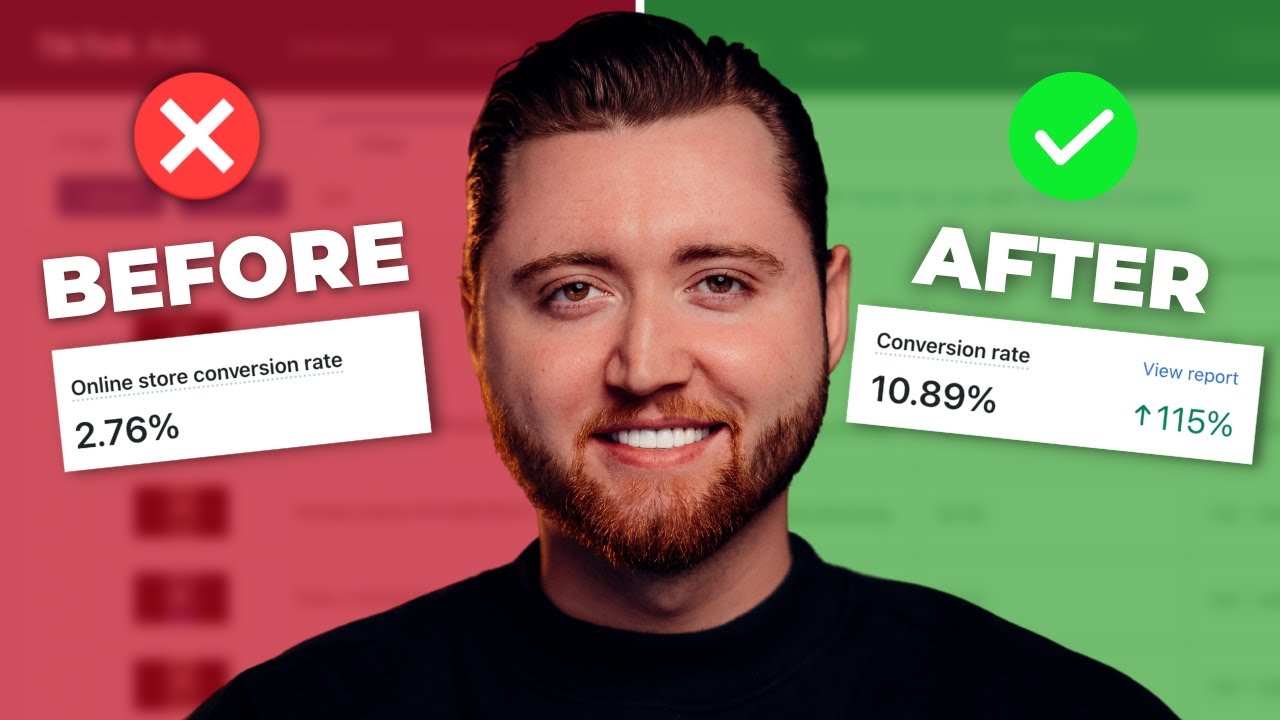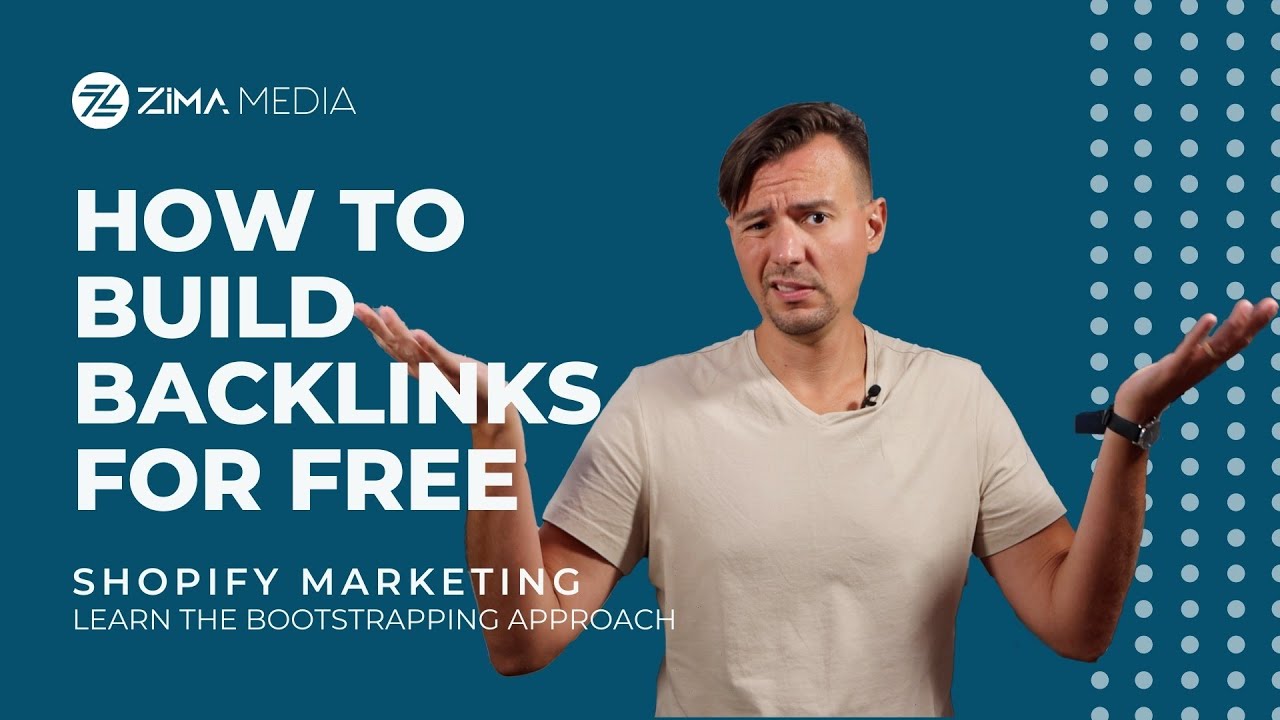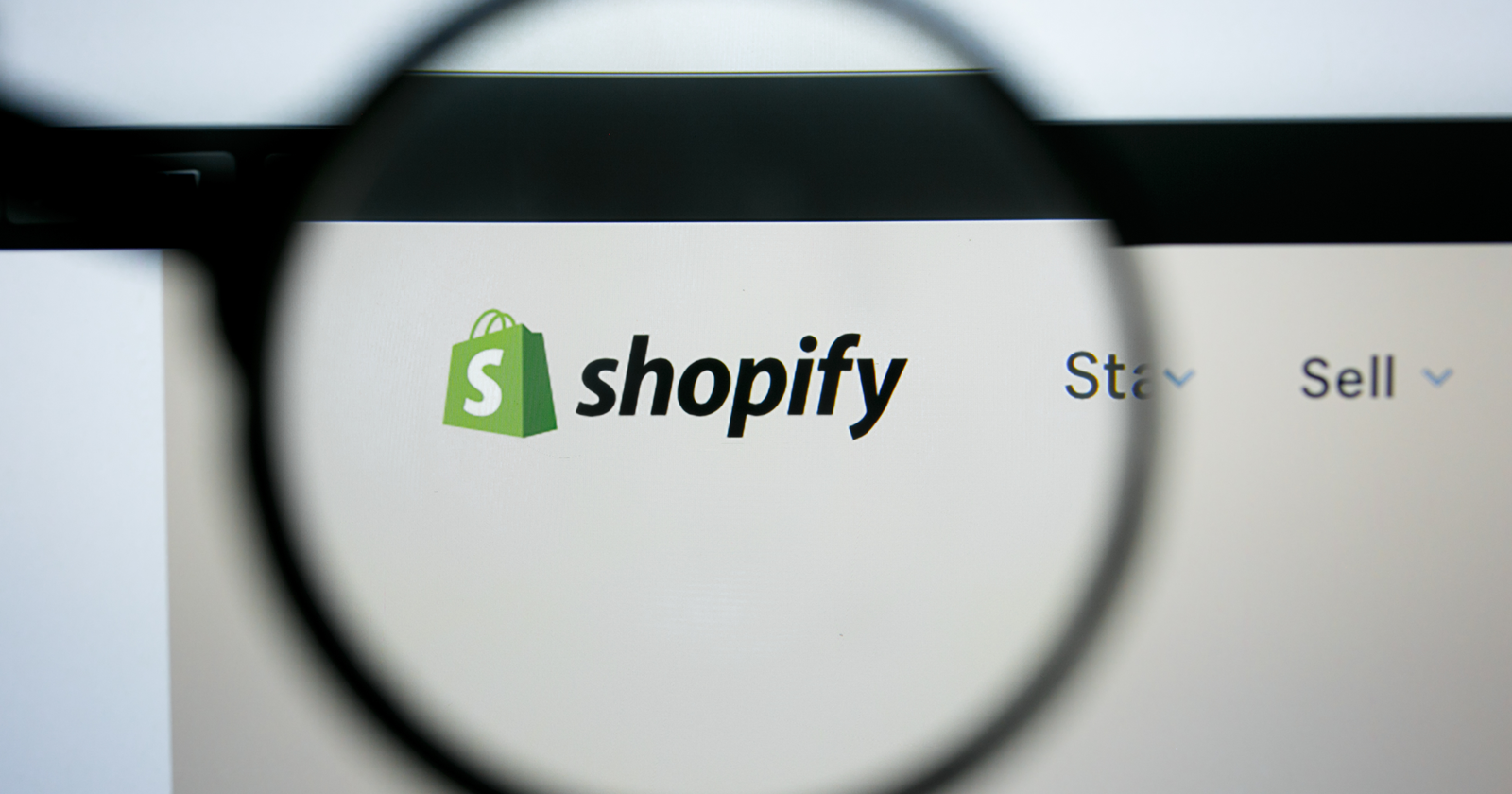In today's digital landscape, having a strong online presence is crucial for the success of any e-commerce business. Shopify, one of the leading e-commerce platforms, provides entrepreneurs with a user-friendly and feature-rich platform to set up their online stores. In this article, we will explore the importance of Shopify SEOstores and delve into actionable strategies to optimize your online store for better search enginerankings. However, simply having a Shopify store is not enough to thrive in the highly competitive online marketplace. This is where Search Engine Optimization(SEO) comes into play. By implementing effective SEOstrategies, Shopify store owners can enhance their visibility on search engines, drive organic traffic, and boost sales.
What Is Shopify SEO?

Shopify SEO Optimisation (a Beginners Guide)
Shopify SEOrefers to the practice of optimizing an e-commerce store built on the Shopify platform to improve its visibility and rankings in search engine results. It involves implementing various strategies and techniques to enhance the store's chances of appearing higher in search engine listings when relevant keywords are searched by users. The goal of Shopify SEO is to attract organic (non-paid) traffic to the store, increase its online visibility, and ultimately drive more targeted visitors who are likely to convert into customers.
Effective Shopify SEO involves optimizing product pages, meta tags, URLs, content, and other elements of the store to align with search engine algorithms and user search intent. By implementing SEO best practices, Shopify store owners can improve their chances of being found by potential customers, boost brand visibility, and ultimately drive more sales and revenue.
Why Is SEO Important For Your Shopify Store?
- Increased Organic Traffic -SEO helps your Shopify store rank higher in search engine results pages (SERPs), leading to increased visibility and organic traffic. When your store appears on the first page of search results for relevant keywords, you have a higher chance of attracting potential customers.
- Improved Credibility and Trust -High search engine rankings signal credibility and trustworthiness to users. When your store appears at the top of search results, it instills confidence in potential customers, increasing the likelihood of them choosing your store over competitors.
- Cost-Effective Marketing -SEO provides long-term value and is a cost-effective marketing strategy compared to paid advertising. While paid campaigns require continuous investment, SEO efforts can continue to drive organic traffic and generate sales without the need for ongoing ad spend.
- Targeted and Relevant Traffic -SEO allows you to optimize your store for specific keywords related to your products or services. This means that the traffic you attract through SEO is more likely to be relevant and targeted, consisting of users actively searching for what you offer.
- Long-Term Sustainability -SEO is a long-term investment. Once you establish a strong presence in search engine rankings, it can be sustained with ongoing optimization efforts. This longevity allows you to consistently generate organic traffic and maintain a competitive edge in the e-commerce market.
Is Shopify A Good Platform For E-commerce?

What is Shopify & How Does It Work? [E-Commerce Beginners: Start Here]
Yes, Shopify is widely regarded as an excellent platform for e-commerce. Here are several reasons why Shopify is considered a top choice for entrepreneurs and businesses looking to establish an online presence:
- User-Friendly Interface -Shopify offers an intuitive and user-friendly interface that makes it easy for beginners to set up and manage their online stores. It provides a drag-and-drop store builder, customizable themes, and a straightforward dashboard, allowing users to create and customize their stores without requiring extensive technical knowledge.
- Robust Feature Set -Shopify offers a comprehensive set of features to support various aspects of e-commerce, including inventory management, order processing, payment gateways, shipping integrations, and more. It also provides built-in marketing tools, SEO features, and analytics capabilities to help businesses grow and succeed online.
- Reliable Hosting and Security -Shopify takes care of hosting your online store, ensuring that it operates smoothly and reliably. With robust security measures in place, including SSL certificates and PCI compliance, Shopify offers a secure environment for conducting online transactions and protecting customer data.
- Scalability -Whether you're just starting or experiencing rapid growth, Shopify can scale with your businessneeds. It accommodates businesses of all sizes, from small independent stores to large enterprises, providing the flexibility to expand your operations and handle increased traffic and sales.
- App Integrations and Add-Ons -Shopify has a vast ecosystem of apps and add-ons available in the Shopify App Store. These extensions allow you to enhance your store's functionality by integrating with third-party tools for marketing, customer support, analytics, inventory management, and more.
- Mobile-Responsive Design -With an increasing number of customers shopping on mobile devices, Shopify offers mobile-responsive themes that ensure your store looks great and functions seamlessly on smartphones and tablets. This mobile-friendly approach helps deliver an optimal user experienceand improves conversions.
- Customer Support -Shopify provides reliable customer support through various channels, including live chat, email, and phone support. Additionally, there is an extensive knowledge base and a thriving community of experts and developers that can assist you with any questions or challenges you may encounter.
What Features Does Shopify Have To Support SEO?
Shopify offers several built-in features and tools to support SEO efforts for your online store. These features help optimize various elements of your Shopify store to improve its visibility in search engine results. Here are some key features that Shopify provides to support SEO:
- Customizable Meta Tags -Shopify allows you to customize meta titles and meta descriptionsfor your products, collections, blog posts, and web pages. This enables you to optimize these crucial elements with relevant keywords and compelling content to attract search engine users.
- Editable URLs -You have control over the URLs of your products, collections, and web pages in Shopify. This feature enables you to create search engine-friendly URLs that include relevant keywords, making it easier for search engines to understand the content of your pages.
- Mobile-Responsive Themes -Shopify offers a wide range of mobile-responsive themes that ensure your store looks and functions well on mobile devices. With mobile-friendliness being a crucial factor for SEO, this feature helps improve user experience and search engine rankings.
- Image Optimization -Shopify allows you to optimize product images by adding alt tags. Alt tags describe the content of the image and provide additional context to search engines, improving the chances of your images appearing in image search results.
- Blog Functionality -Shopify has a built-in blogging platform that enables you to create and publish blog posts. Blogging is an effective way to generate valuable content, target long-tail keywords, and attract organic traffic to your store.
- XML Sitemap -Shopify automatically generates an XML sitemap for your store, which helps search engines crawl and index your website more efficiently. The sitemap ensures that all your webpages are discoverable by search engines, improving your overall SEO performance.
- Integration with Google Analytics-You can easily connect your Shopify store with Google Analytics, which provides valuable insights into your website's traffic, user behavior, and performance. This integration helps you analyze SEO-related metrics and make data-driven decisions to optimize your store further.
- Canonical Tags -Shopify automatically generates canonical tags, which help prevent duplicate content issues. Canonical tags indicate the preferred version of a webpage, ensuring that search engines understand which version to index and rank, preserving your SEO efforts.
Keyword Research And Optimization
Keyword research and optimization are essential components of effective SEO strategies. By identifying relevant keywords and optimizing your website content accordingly, you can improve your search engine rankings and attract targeted organic traffic. Here's a breakdown of the keyword research and optimization process:
Keyword Research
- Brainstorming -Start by brainstorming a list of topics, products, or services related to your business. Think about the terms your target audience might use when searching for information or products in your industry.
- Keyword Research Tools -Utilize keyword research tools such as Google Keyword Planner, SEMrush, or Ahrefs to expand your keyword list, discover search volume, and identify keyword variations. These tools provide insights into the popularity and competitiveness of keywords.
- Long-Tail Keywords -Focus on long-tail keywords, which are more specific and have lower search volume but tend to attract highly targeted traffic. Long-tail keywords often have less competition, making it easier to rank for them.
- Competitor Analysis -Analyze the keywords your competitors are targeting. Identify the keywords they rank for and consider if those keywords are relevant to your business as well.
- Searcher Intent -Consider the intent behind the keywords. Are users looking for information, making a purchase, or seeking specific solutions? Align your keyword selection with the intent to attract relevant visitors.
Keyword Optimization
- Page Titles and Meta Descriptions-Incorporate your target keywords naturally into your page titles and meta descriptions. Ensure they accurately describe the content of the page and entice users to click through from search engine results.
- URLs -Optimize your URLs by including relevant keywords. Keep them concise, descriptive, and readable for both search engines and users.
- Headers and Content -Use keywords in your heading tags (H1, H2, etc.) and throughout your website content. Ensure that keyword usage is natural, providing valuable and relevant information to the reader.
- Image Alt Tags -Include descriptive alt tags for your images, utilizing keywords where appropriate. Alt tags not only improve accessibility but also provide search engines with context about your images.
- Internal and External Linking -Incorporate internal links within your content to direct users to relevant pages on your website. Additionally, aim for high-quality external linksfrom reputable sources to increase your website's credibility and authority.
- User Experience - Ensure that your website provides a positive user experience by optimizing page load times, mobile responsiveness, and navigation. A well-optimized site that is easy to use enhances user engagement and improves SEO performance.
Optimize Your Product Pages

9 Tips To Optimize Your Product Pages For More Sales (Conversion Optimization)
Optimizing your product pages is crucial for improving the visibility and ranking of your Shopify store in search engine results. Here are some key strategies to optimize your product pages:
- Unique and Descriptive Product Titles -Craft unique and descriptive titles for each product that accurately represent the item and incorporate relevant keywords. Keep the titles concise, informative, and compelling to attract both search engine crawlers and potential customers.
- Optimized Product Descriptions -Write detailed and engaging product descriptions that highlight the features, benefits, and unique selling points of the product. Incorporate relevant keywords naturally throughout the description while maintaining readability and providing valuable information to potential buyers.
- High-Quality Product Images -Use high-resolution, visually appealing product images that showcase the item from different angles. Optimize the images by compressing them without sacrificing quality to improve page load times. Additionally, include descriptive alt tags for each image, incorporating relevant keywords when appropriate.
- Structured Data Markup -Implement structured data markup, such as schema.org or JSON-LD, to provide search engines with additional information about your products. This markup can enhance search engine understanding and potentially result in rich snippets, such as star ratings, pricing details, and availability, which can improve click-through rates.
- Customer Reviews and Ratings -Enable and encourage customer reviews and ratings on your product pages. User-generated content adds credibility and social proof, influencing potential customers' buying decisions. Positive reviews can also enhance your store's visibility and rankings in search results.
- Clear Call-to-Action (CTA) -Place a prominent and compelling CTA button on each product page, guiding visitors to take the desired action, such as "Add to Cart" or "Buy Now." The CTA should be visually distinct and easily noticeable, encouraging conversions and improving user experience.
- Cross-Linking Related Products -Incorporate cross-linking by suggesting related or complementary products on each product page. This helps users discover additional items and encourages them to explore more of your store. Internal linking also helps search engines crawl and understand the relationships between different pages on your website.
- Social Sharing Buttons -Include social sharing buttons on product pages to make it easy for visitors to share and promote your products on social mediaplatforms. This can help increase visibility and drive more traffic to your product pages.
Improve Website Performance And User Experience

How To 4X Your Shopify Conversion Rate in 2023
Improving website performance and user experience is essential for enhancing SEO and ensuring a positive browsing experience for visitors to your Shopify store. Here are some strategies to optimize website performance and user experience:
- Choose a Fast and Responsive Theme -Select a Shopify theme that is lightweight, well-coded, and optimized for speed. A fast-loading theme improves user experience and reduces bounce rates, which can positively impact your search engine rankings.
- Optimize Image Sizes -Compress and optimize images to reduce file sizes without compromising quality. Use image optimization tools or Shopify apps to automatically resize and compress images. Smaller image sizes lead to faster page load times, improving user experience.
- Enable Browser Caching -Implement browser caching to store certain elements of your website locally on a user's device. This allows returning visitors to load your pages more quickly, as the browser retrieves cached resources instead of downloading them again.
- Minify CSS and JavaScript -Minify your CSS and JavaScript files by removing unnecessary white spaces, comments, and formatting. Minification reduces file sizes and improves loading speed. Use Shopify apps or plugins to automate this process.
- Utilize Content Delivery Networks (CDNs) -Leverage CDNs to distribute your website's static content across multiple servers worldwide. CDNs cache content closer to your visitors, reducing latency and improving page load times for users in different geographical locations.
- Implement Responsive Design -Ensure your Shopify store is mobile-responsive and adapts to different screen sizes and devices. Responsive design enhances the user experience on smartphones and tablets, and it is also a ranking factor in search engine algorithms.
- Streamline Navigation -Simplify your website's navigation structure and make it intuitive for users to find what they're looking for. Use clear and descriptive menu labels, organize product categories logically, and provide search functionality to help users locate products easily.
- Optimize Checkout Process -Streamline the checkout process to minimize friction and cart abandonment. Use a simplified, step-by-step layout and minimize the number of form fields required. Offer guest checkout options to reduce barriers for first-time customers.
- Implement SSL Encryption -Enable SSL (Secure Sockets Layer) encryption on your Shopify store to establish a secure connection between your server and users' browsers. SSL certificates instill trust, protect sensitive data, and can positively impact SEO rankings.
- Monitor Website Performance -Regularly monitor your website's performance using tools like Google PageSpeed Insights or GTmetrix. Identify performance bottlenecks, slow-loading pages, or issues affecting user experience, and take necessary steps to address them.
Build High-Quality Backlinks

How to Get Backlinks for Your Shopify Store | SEO Tutorial
Building high-quality backlinksis an important aspect of off-page SEO and can significantly impact the visibility and authority of your Shopify store. Here are some strategies to help you build high-quality backlinks:
- Create Compelling Content -Develop high-quality, informative, and shareable content that adds value to your target audience. This could include blog posts, guides, infographics, videos, or industry reports. When your content is valuable, other websites are more likely to link to it naturally.
- Guest Posting -Reach out to relevant blogs or websites in your industry and offer to write a guest post. Ensure that your guest posts provide unique and valuable insights, and include a link back to your Shopify store in the author bio or within the content, where appropriate.
- Resource Link Building-Identify resource pages or lists related to your industry that compile helpful links and resources. Contact the owners or webmasters of these pages and suggest adding your content or website as a valuable resource. This can result in authoritative backlinks.
- Influencer Outreach and Partnerships -Collaborate with influencers, industry experts, or complementary businesses in your niche. They can provide testimonials, and reviews, or feature your products on their websites or social media platforms, generating backlinks and increasing exposure.
- Broken Link Building -Find websites in your industry that have broken links, either within their content or on resource pages. Reach out to the webmasters, notify them about the broken links, and suggest your relevant content or webpage as a replacement link.
- Social Media Promotion - Leverage social media platforms to share and promote your content, including your Shopify store's pages and blog posts. Engage with your audience, encourage social sharing, and increase the chances of acquiring backlinks from social media users and influencers.
- Industry Directories and Listings -Submit your Shopify store to relevant industry directories, local business listings, and niche-specific platforms. These directories often provide opportunities for backlinks and increase your store's online visibility.
- Participate in Online Communities -Engage in online forums, discussion boards, and Q&A platforms related to your industry. Provide helpful answers, participate in discussions, and include a link to your Shopify store when appropriate. This can generate backlinks and establish you as an authority in your field.
Leverage Content Marketing

How To EXPLODE Your Shopify Store with Content Marketing
Content marketingis a powerful strategy to boost your Shopify store's SEO efforts, attract organic traffic, engage your audience, and build brand authority. Here are some ways to leverage content marketing for your Shopify store:
- Create a Blog -Start a blog on your Shopify store and regularly publish high-quality, informative, and engaging blog posts related to your industry, products, or target audience's interests. Optimize each blog post with relevant keywords, internal links to your product pages, and shareable social media buttons.
- Optimize Product Descriptions -Instead of using generic product descriptions provided by manufacturers, create unique and compelling product descriptions that highlight the features, benefits, and value of your products. Incorporate relevant keywords naturally, making your descriptions both informative and SEO-friendly.
- How-to Guides and Tutorials -Develop how-to guides, tutorials, or instructional videos that demonstrate how touse your products or provide valuable tips and insights related to your industry. This type of content not only attracts organic traffic but also establishes your expertise and builds trust with your audience.
- Case Studiesand Success Stories -Share case studies or success stories that showcase real-life examples of how your products have helped customers solve problems or achieve their goals. Highlight the benefits and outcomes, including before-and-after scenarios, to provide social proof and encourage conversions.
- Guest Blogging and Collaborations -Seek opportunities to guest blog on reputable industry websites or collaborate with influential bloggers or content creators in your niche. This allows you to tap into their audience, gain exposure, and acquire valuable backlinks to your Shopify store.
- Video Content -Create video content, such as product demos, tutorials, or behind-the-scenesfootage, and publish them on platforms like YouTube or Vimeo. Optimize the video descriptions, titles, and tags with relevant keywords to increase visibility and drive traffic back to your Shopify store.
- Social Media Engagement -Utilize social media platforms to share and promote your content. Develop a content calendar and schedule regular posts to engage your audience, spark discussions, and encourage social sharing. Engage with followers, respond to comments, and use social media as a channel to drive traffic to your store.
- Email Newsletters -Build an email list of interested subscribers and send out regular newsletters featuring your latest blog posts, promotions, or curated content. Provide valuable information and incentivesto encourage recipients to visit your Shopify store and make purchases.
Tips To Improve SEO For Your Shopify Pages

How To Get Your Shopify Store to RANK HIGH IN SEARCH ENGINES (SEO Checklist)
- Optimize Page Titles and Meta Descriptions -Craft unique, descriptive, and keyword-rich titles and meta descriptions for each page. Keep them concise, compelling, and relevant to improve click-through rates in search engine results.
- Utilize Header Tags -Use header tags (H1, H2, etc.) to structure your content and make it easier for search engines to understand the hierarchyand relevance of your page elements. Incorporate relevant keywords naturally in your headers.
- Enable SSL Encryption -Ensure your Shopify store has an SSL certificate to establish a secure connection between your server and users' browsers. SSL encryption not only protects customer data but also improves trust and may positively impact SEO rankings.
- Optimize URL Structure -Create clean and keyword-rich URLs for your pages. Keep them concise, readable, and reflective of the page content. Avoid using unnecessary numbers, symbols, or excessive words in your URLs.
- Write Unique Product Descriptions -Avoid using duplicate product descriptions provided by manufacturers. Craft unique and compelling product descriptions that highlight the benefits, features and unique selling points of each product. Incorporate relevant keywords naturally.
- Add Alt Tags to Images -Include descriptive alt tags for your product images. Alt tags provide additional context to search engines about the image content and improve accessibility. Use relevant keywords when appropriate.
- Use Internal Linking -Incorporate internal links within your content to guide users to related pages on your Shopify store. Internal linking helps search engines crawl and understand the structure and relationships between different pages on your website.
- Optimize Page Loading Speed -Improve your page loading speed by optimizing images, leveraging browser caching, minimizing CSS and JavaScript files, and using a fast and reliable hosting provider. Faster loading times enhance user experience and can positively impact SEO.
- Mobile Responsiveness -Ensure your Shopify store is mobile-responsive and provides a seamless user experience across different devices and screen sizes. Mobile-friendly websites are favored by search engines and can improve rankings in mobile search results.
- Monitor and Analyze Performance -Regularly monitor your Shopify store's performance using tools like Google Analytics and Google Search Console. Track important metrics such as organic traffic, bounce rates, and conversions. Use the data to identify areas for improvement and optimize your SEO strategies.
People Also Ask
How Much Does Shopify Cost?
Shopify offers different pricing plans to cater to businesses of all sizes. The basic plan starts at $29 per month, while advanced plans with additional features are available at higher price points.
Can I Use My Own Domain Name With Shopify?
Yes, you can use your existing domain namewith Shopify. You can either transfer your domain to Shopify or connect it through domain settings.
Does Shopify Provide Secure Payment Options?
Absolutely! Shopify offers a range of secure payment options, including Shopify Payments, which allows you to accept credit card payments. Additionally, it integrates with various third-party payment gateways.
Can I Customize The Design Of My Shopify Store?
Yes, Shopify provides a wide selection of themes and templates that you can customize to reflect your brand identity. Additionally, you can modify the design using HTML, CSS, and Shopify's built-in theme editor.
Conclusion
In the world of e-commerce, where thousands of online stores compete for visibility and customers, implementing SEO strategies can give your Shopify store a significant advantage. By optimizing your store for search engines, you can improve your visibility, attract highly targeted organic traffic, and ultimately increase sales.
Remember, SEO is an ongoing process, and staying updated with the latest trends and algorithms is essential to maintaining your competitive edge. With a well-optimized Shopify store and a solid SEO strategyin place, you can position your business for long-term success in the ever-evolving world of e-commerce.
